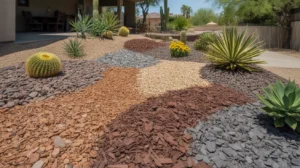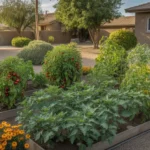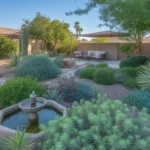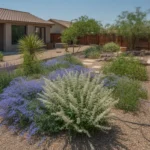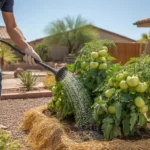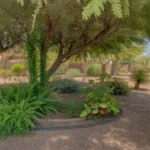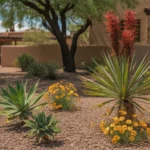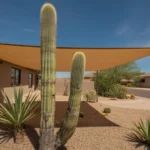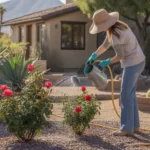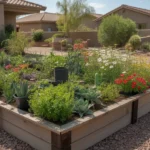Mulching is a crucial step in protecting your Gilbert yard from the intense Arizona sun. The right mulch acts as a shield, regulating soil moisture, suppressing weeds, and insulating plant roots. But with so many options available, how do you choose the best mulch for Gilbert’s extreme heat? Let’s explore the top contenders.
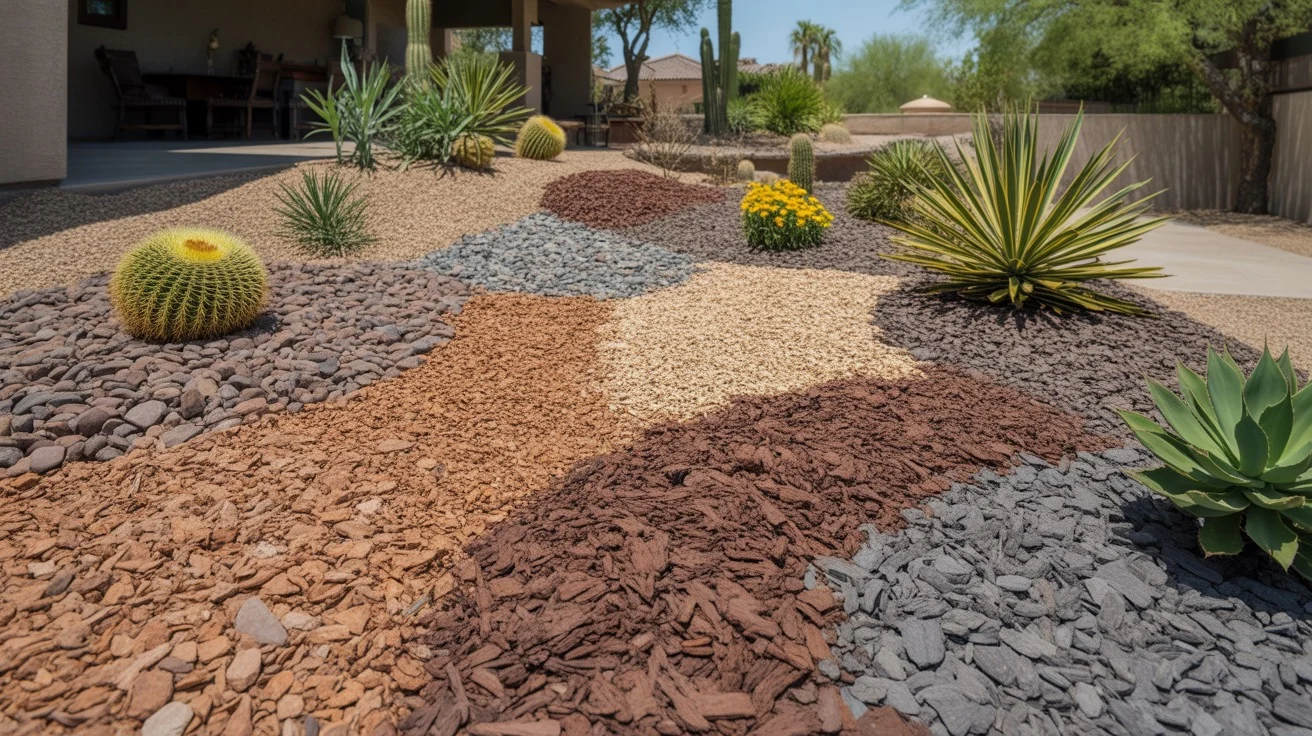
Why Mulch Matters in the Desert
Before we dive into specific mulch types, it’s important to understand why mulching is especially critical in desert climates like Gilbert. Our scorching summers and low rainfall create challenging conditions for plants. Without a protective layer, soil quickly dries out, leading to stressed roots and thirsty plants.
Mulch acts as a barrier, slowing evaporation and keeping moisture where it’s needed. It also helps moderate soil temperature, preventing the wild swings that can damage tender roots. And by blocking sunlight, mulch suppresses weed growth, saving you time and effort. In short, mulch is a multitasking hero for desert yards.
🌵 Inorganic Mulches: Rocks & Gravel
In Gilbert, inorganic mulches reign supreme. These materials, including rocks, gravel, and decomposed granite, are ideal for our climate. They don’t break down or blow away, making them a long-lasting choice. And because they don’t retain moisture against plant stems, they reduce the risk of rot and disease.
For high-impact areas like entryways and patios, consider decorative rock in earth tones or subtle hues. Pea gravel and crushed granite work well for paths and play areas. And for a classic desert look, decomposed granite in shades of tan and gold blends beautifully with native plants and cacti.
🍂 Organic Mulches: Bark & Wood Chips
While less common in Gilbert, organic mulches like bark and wood chips have their place, especially in shaded or sheltered areas. These materials break down over time, enriching the soil with nutrients and improving its structure. They also have a natural, woodsy look that complements cottage-style and lush landscape designs.
If you opt for organic mulch, choose larger chunks that won’t blow away in our seasonal winds. Shredded bark and chunky wood chips work well. Avoid fine materials like sawdust, which can form a water-repellent crust. And keep mulch pulled back from plant stems to prevent rot and pest issues.
💧 Mulch & Irrigation: A Winning Combo
No matter which mulch you choose, it’s important to pair it with an efficient irrigation system. Mulch helps conserve water, but it can’t replace regular, deep watering. Make sure your irrigation is tuned up and delivering water where it’s needed most – at the roots.
Consider installing drip irrigation beneath your mulch layer. This delivers water directly to the root zone, minimizing evaporation and waste. It also keeps mulch dry, reducing the risk of fungal growth and pest problems. With the right combination of mulch and irrigation, your Gilbert yard can thrive in even the hottest months.
🌞 Choosing the Best Mulch for Your Yard
So which mulch is right for your Gilbert yard? It depends on your landscape style, budget, and maintenance preferences. Here are a few guidelines:
- For low-maintenance, long-lasting coverage, choose inorganic options like gravel or decomposed granite.
- For a natural look that enriches the soil, opt for organic materials like bark chips in shaded areas.
- In high-traffic zones and play areas, select stable, durable materials like crushed granite or river rock.
- For decorative areas, consider tumbled glass, colored rock, or polished pebbles for a stylish touch.
Whichever mulch you choose, apply a layer 3-4 inches deep for optimal coverage. This will ensure effective weed suppression, moisture retention, and temperature regulation. Reapply annually or as needed to maintain depth and freshness.
Mulch Pitfalls to Avoid
While mulch offers many benefits, there are a few common mistakes to watch out for. First, resist the temptation to over-mulch. A too-thick layer can suffocate roots and prevent water penetration. Aim for that 3-4 inch sweet spot.
Second, keep mulch pulled back from tree trunks, woody stems, and the crowns of plants. Direct contact can trap moisture and invite pests and disease. A few inches of breathing room goes a long way.
Finally, choose mulch that complements your plants’ needs. Desert-adapted plants like agave and prickly pear thrive with inorganic mulches that drain quickly. But plants that prefer consistent moisture, like hibiscus and iris, do better with water-retentive organic materials.
🌈 Mulch & Landscape Design
Beyond its practical benefits, mulch can also play a key role in your landscape design. The color, texture, and style of your mulch can enhance your yard’s overall aesthetic. For a modern, minimalist look, try sleek black gravel or smooth river rock. For a natural, desert-inspired vibe, opt for earthy decomposed granite or striped boulders.
You can also use mulch to create visual interest and define different zones in your yard. Try pairing contrasting colors, like light pebbles against dark wood chips, to highlight focal points or pathways. Or use mulch to create naturalistic dry creek beds that direct rainwater and add a striking design element.
Remember, the best mulch for Gilbert’s extreme heat is one that balances form and function. By choosing materials that both protect your soil and enhance your landscape style, you’ll create a yard that’s as beautiful as it is resilient. So go ahead and explore the world of mulch – your plants (and your creativity) will thank you!

